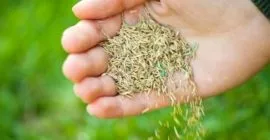It can be quite confusing to know what settings to use on your type of lawn spreader, never mind using it with various different products. Use the following table to apply Westland Lawn Care Products with a lawn spreader. This guide will tell you which settings to use to apply at the correct rate.
| Westland SafeLawn |
Aftercut Triple Care |
Westland Lawn Sand2 | Westland Moss Master | Westland Moss Master | ||
| Application Rate | 35g/sq.m | 32g/sq.m | 35g/sq.m | 80g/sq.m | 50g | 100g |
| Westland Lawn Spreader (Purple) | 4 | 4 | 4 | 3 | 3 x 2* | 4 |
| Westland Lawn Spreader (Green) | 3 | 3 | 3 | 3 | 3 x 2* | 4 |
| Scotts EvenGreen | 6.75 | 6.75 | 6.75 | 4.25 | 7 | 9 |
| Scotts EasyGreen Rotary** | 27 | 26 | 26 | |||
| Scotts Evergreen Easy Spreader+ | 5 | 3.5 x 2* | 3.5 x 2* | 4 | 4 | 4 x 2* |
| Gardena 18″ Blue | 4 | 4 | 3.5 |
*meaning 2 applications at 90° to each other forming a cross hatch pattern.
** We do not recommend rotary spreaders for pesticide products.
Westland Hand Spreader:
Please refer to product pack for application dates. Also, do not exceed the stated application rate as overdosing can subsequently result in damaging your lawn.
To Use:
Firstly, measure the area to treat and also weigh out correct amount of product. Secondly, set aperture to 0 and fill on a level surface – not on a lawn or cultivated area. Select the appropriate setting on your spreader and then evenly spread over whole measured area. Finally, continuously turn handle and walk at a normal pace. Application rate can vary depending on walking speed and handle turning speed, therefore to increase application overlap more frequently.
| Setting | Application |
|
0 |
Closed |
|
1 |
Light Application |
|
2 |
Medium Application |
|
3 |
Heavy Application |
Not suitable for fertilisers containing pesticides.
Notes:
- All settings are for guidance only. Variations in product density as well as granule size can affect flow rate. Wear and tear can affect the performance of the individual spreader
- Avoid over-dosing at all times. It is recommended that a lower setting is first tried to avoid the risk of over-dosing
- Always complete calibration check before first use and also before use each season
- Always ensure the spreader is cleaned thoroughly after use to therefore avoid deterioration of the spreading mechanism
- g/sq.m = grams per square metre
How to work out lawn spreader settings (Calibrate)
Firstly work out the area in m2 that you want to cover. Secondly weigh out a known amount of product recommended to treat that area and put it into the spreader hopper. In order to avoid any accidental damage to your lawn, first use the spreader to cover one square metre on a large sheet of plastic. Finally, collect the product with a dustpan and brush and also weigh it (making sure you use an old container as ferrous sulphate can cause staining).
- Repeat as necessary until you get the application rate given on the lawn product packet.
- Furthermore, if you are over dosing, then turn down the spreader setting as soon as you suspect this is happening – don’t wait until you have over dosed the whole lawn
USE PESTICIDES SAFELY: ALWAYS READ THE LABEL AND INSTRUCTIONS BEFORE USE




